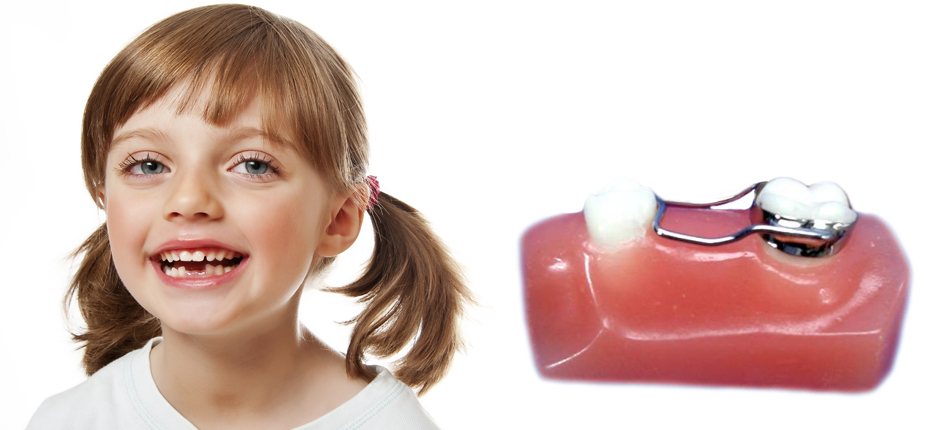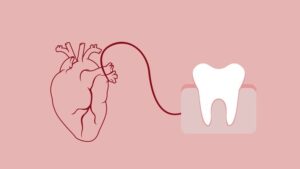In addition to chewing, baby teeth are also instrumental in serving as a guide to the permanent teeth that are about to erupt over time. Each baby tooth works as a guide and if the baby teeth are lost prematurely, the major cause of baby teeth gets frustrated leading to the wrong positioning of the permanent teeth. In case the baby tooth is shed early the nearby teeth can also move and tilt from its position and shift to the place where permanent tooth is about to erupt leaving no space for it to come out.

Causes of Premature Primary Teeth Lose
There are several reasons that may result in teeth loose or primary teeth of kids before time, which include:
- Severe knocked out due to a fall or accident.
- Need extracted due to severe decay leading to a tooth infection.
- Might be missing since birth.
- Some medical conditions resulting in early tooth loss.
Space Maintainer
When a child loses primary teeth early space maintainers can be used. It is a custom made device provided by a dentist made of acrylic or metal substance. It is either cemented in the child’s mouth or removable. The basic purpose of this device is to maintain the space to welcome the permanent tooth to take its place. Space maintainer is not required in every child who sheds baby tooth prematurely; although, a dentist must be consulted to ascertain if space maintainer is required.
Types of Space Maintainers
This tool constitutes of stainless steel, metal or plastic. Some are fixed in the mouth and some are removable.
Removable Space Maintainer
The removable space maintainer appears to be a retainer. In this device an artificial teeth or plastic segments are fill in the vacant space that are required to remain open. This device is mostly recommended for older children who can religiously follow instructions and can be relied upon about taking good care of this appliance.
Fixed Space Maintainer
The fixed space maintainers are of many types. To start with a band-and-loop maintainer comprised of stainless steel wire and is kept in place by a crown on the tooth adjacent to the open space. A wire twist is associated to the crown. This wire ring holds the space and keeps it open. This enables the permanent tooth to erupt out comfortably without getting crowded by offering sufficient space.
If the space maintainer is to be customized for the lower jaw, a lingual arch is facilitated when rear teeth are lost. Lingual indicates the tongue or inner side of the teeth. Such space maintainers are made of bands tied around a tooth on any side of the mouth behind the missing teeth. A wire linked to the bands is associated with the bottom teeth and allows the space on both sides of the teeth.
Yet another type of fixed space maintainer is termed as a distal shoe appliance, which is placed inside the gums. It comprises of a metal wire inserted under the gum thus keeping the space from closing. This may require some sort of adjustment for enabling the tooth come in properly as it may block its eruption.
Is Space Maintainer Necessary
Not all premature baby tooth warrants space maintainer. If any one of the upper front four teeth is shed prematurely, the space will not close until the permanent tooth erupts. It is up to the decision of your kid’s dentist if your kid would require a space maintainer or not given your kid’s dental condition, cooperation from your kid and some other factors.
Construction of Space Maintainer
Every space maintainer is unique in its length, width and overall structure. First the impressions are taken using a soft material having taste of toothpaste. It is set into a gel around the teeth, which is removed from the mouth. This is the impression from which the space maintainer is made. Once the device is ready, it is sent back to the dentist. The dentist cements it in the place of a next office visit.
How to Care for Space Maintainer
It may feel uneasy and uncomfortable for the initial few days. Later on the kid would forget its presence in the mouth. A removable device may affect the speech of your kid until your child is comfortable with it after some days.
To care for the kid’s space maintainer it is imperative to brush the teeth regularly for keeping the gum cells healthy. The kid must stay away from sticky or hard substance and gum. They can release the band or get stuck in the wire arm. In the event of the space maintainer getting loose or coming out, it may get swallowed or inhaled into the lung. Lastly, the kid must not push the space maintainer using tongue or fingers. It may dislodge it or make it loose.
Depends on the specific condition, your dentist may ask you to consult with Kids Orthodontist for ensuring the proper structure and growth of permanent teeth by analyzing the space erupted by missing teeth.
Follow-up with Space Maintainer
The dentist would take X-rays of the teeth of your kid to analyze the progress of the incoming permanent tooth and the space maintainer will be removed when the tooth is about to erupt.
Above stated are some of the basic steps that should be followed if your kid is in need of space maintainer due to early tooth loss. Just ensure to consult with a dentist at the right time for proper treatment for perfect and healthy teeth of your kids.



